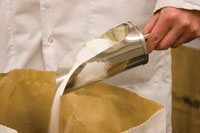
What can the food industry do to protect itself from these and other chemicals? First, cut the regulators some slack. A regulatory agency or buyer can only know to test for something if there is a history of its use. Consequently, no one would have tested for melamine prior to 2007.
Processors using imported ingredients, especially from countries with a history of problems, must develop programs to protect themselves and their customers. Government regulation is part of the solution, but teamwork from all areas of the food industry is needed. If your company finds a problem, report it.
Processors using imported ingredients should also develop and implement a strong vendor evaluation and approval program. This entails establishing clear acceptance criteria for potential vendors or partners, definitive performance specifications and programs to verify production operations and finished goods are produced according to acceptable industry standards.
In addition, processors must have programs to ensure ingredients are produced under good quality, safety and sanitary conditions. The best way to do this is with facility audits. Look closely at the operation, buildings, grounds and documentation programs, and audit the facility yourself instead of relying on a third party.
Buyers must also establish programs to verify the quality of all purchased lots. Basic steps in such a program include maintaining a letter of continuing guaranty on file and asking that a certificate of analysis (COA) be provided with each lot. The letter of continuing guaranty includes basic information stating the products are manufactured under sanitary conditions, packaging materials are manufactured from materials approved for food contact, or products are manufactured within established specifications. This letter should be obtained from each vendor and updated yearly.
COAs contain testing data. Each lot bought from an overseas company should have its own COA. Unfortunately, how samples are collected and tested is often a problem. Many companies do their own testing and generate their own certificates. Others send samples to a local government laboratory and have it produce the COA.
Some companies also mandate the vendor provides them with a sample prior to shipment, and the sample’s evaluation determines whether the lot comes forward. But who took the sample? Did the company do preliminary screening to ensure you or the laboratory received a good sample for testing?
Perhaps the best way to ensure samples are properly collected and analyzed is to work with an independent laboratory that is subjected to the same rigid vendor approval process as ingredient suppliers. Have the lab collect and analyze samples for you, and build this into your contract with the supplier. Make it perfectly clear nothing ships until the laboratory has completed the testing and you have reviewed the data.
Despite the best efforts outlined here, there is a still a danger unapproved samples may be shipped. The point is you have done everything in your power to protect your customers and the public.
